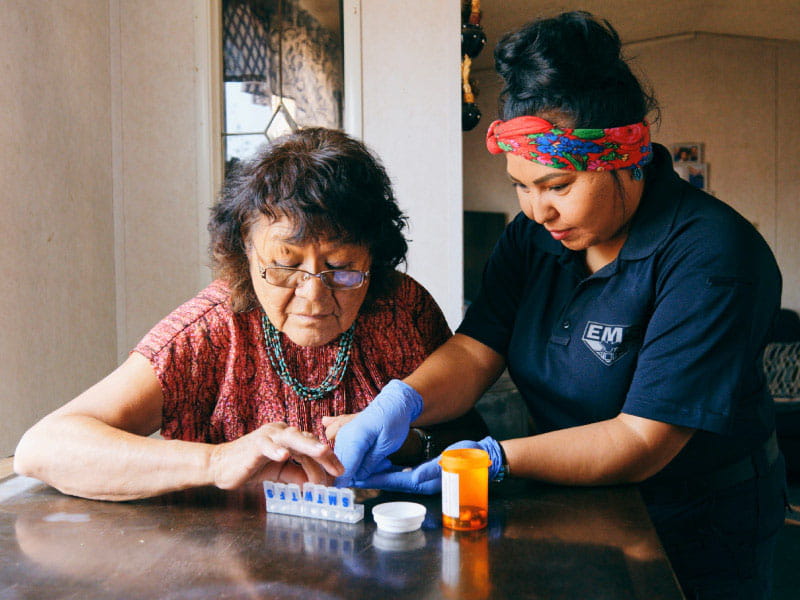American Indian adults may face higher rates of heart failure
By American Heart Association News

Heart failure rates may be two to three times higher among American Indian populations than studies have found for Black, Hispanic or white adults, according to a new analysis, one of the first to focus on a group that has been largely underrepresented in research on this condition.
The study, published Wednesday in the Journal of the American Heart Association, used a newly proposed risk prediction tool developed specifically for American Indian people. The analysis found smoking, body mass index, kidney damage and whether Type 2 diabetes was well-controlled were major factors in determining heart failure risk for this population.
The prediction tool used in the study can better assess risk and be used to develop preventive strategies to reduce heart failure events and deaths among American Indians, lead study author Dr. Irene Martinez-Morata said in a news release. She is a researcher at Columbia University's Mailman School of Public Health in New York City.
Heart failure occurs when the heart doesn't pump as well as it should, so it's unable to send enough oxygen-rich blood to the rest of the body. It is a leading cause of death among people with Type 2 diabetes, which occurs at disproportionately higher rates among American Indians.
About 1 in 4 people who self-identify as American Indian or Alaska Native have Type 2 diabetes, a rate three times higher than their white peers. Prior studies have found Type 2 diabetes to be the biggest risk factor for cardiovascular disease, which includes heart failure, among American Indians. According to a 2020 American Heart Association scientific statement, cardiovascular disease has been rising in this group over the past 50 years.
Because Type 2 diabetes can play a role in the development of heart failure, the risk prediction equation used in the new research included measures of diabetes control and kidney damage. Researchers analyzed medical data from the Strong Heart Study for 3,059 adults ages 45 to 74 from American Indian tribes in North and South Dakota, Oklahoma and Arizona. Participants enrolled in the study, the largest to examine heart disease in American Indian adults, from 1989 to 1992 and were followed through the end of 2019.
Overall, 16.5% of people in the study developed heart failure, a rate two to three times higher than other studies have found for Black, Hispanic and white adults. The highest rates were found among people with Type 2 diabetes at the time of enrollment and high levels of albumin in their urine, an indicator of kidney damage related to Type 2 diabetes.
Having Type 2 diabetes was linked to a 74% higher risk for heart failure within 10 years, while having albumin in the urine suggested an eightfold higher risk for heart failure within five years. Among participants with Type 2 diabetes, those whose blood sugar remained high for a sustained period of time had a 23% higher risk for heart failure, suggesting that blood sugar control played an important role in the development of this condition.
Participants who smoked had double the heart failure risk over both five and 10 years. Having had a heart attack raised the risk for heart failure nearly seven times over five years. Older age also increased the risk for heart failure by roughly 80% over five years and 70% over 10 years.
Having Type 2 diabetes alone – independent of other risk factors – was a major risk factor for heart failure. Martinez-Morata said many factors can contribute to the development of Type 2 diabetes, including an unhealthy diet, lack of physical activity and exposure to environmental toxins, such as arsenic and lead.
The 2020 AHA scientific statement notes limited access to care and longstanding, complex social determinants of health have played a role in the health of American Indians. These historical events include being forced to move from their native lands to areas with limited care; unethical research practices; infectious disease; and unfulfilled agreements that collectively have resulted in distrust of the U.S. government and the medical community.
Martinez-Morata said the high rates of Type 2 diabetes among American Indians can be attributed to more than individual behaviors. The lack of representation in research also has led to an underreporting of disease burden, she said.
"American Indian communities have suffered historical injustices in exposure to contaminants, health care accessibility and other sociodemographic factors resulting in a long history of health disparities," she said.





